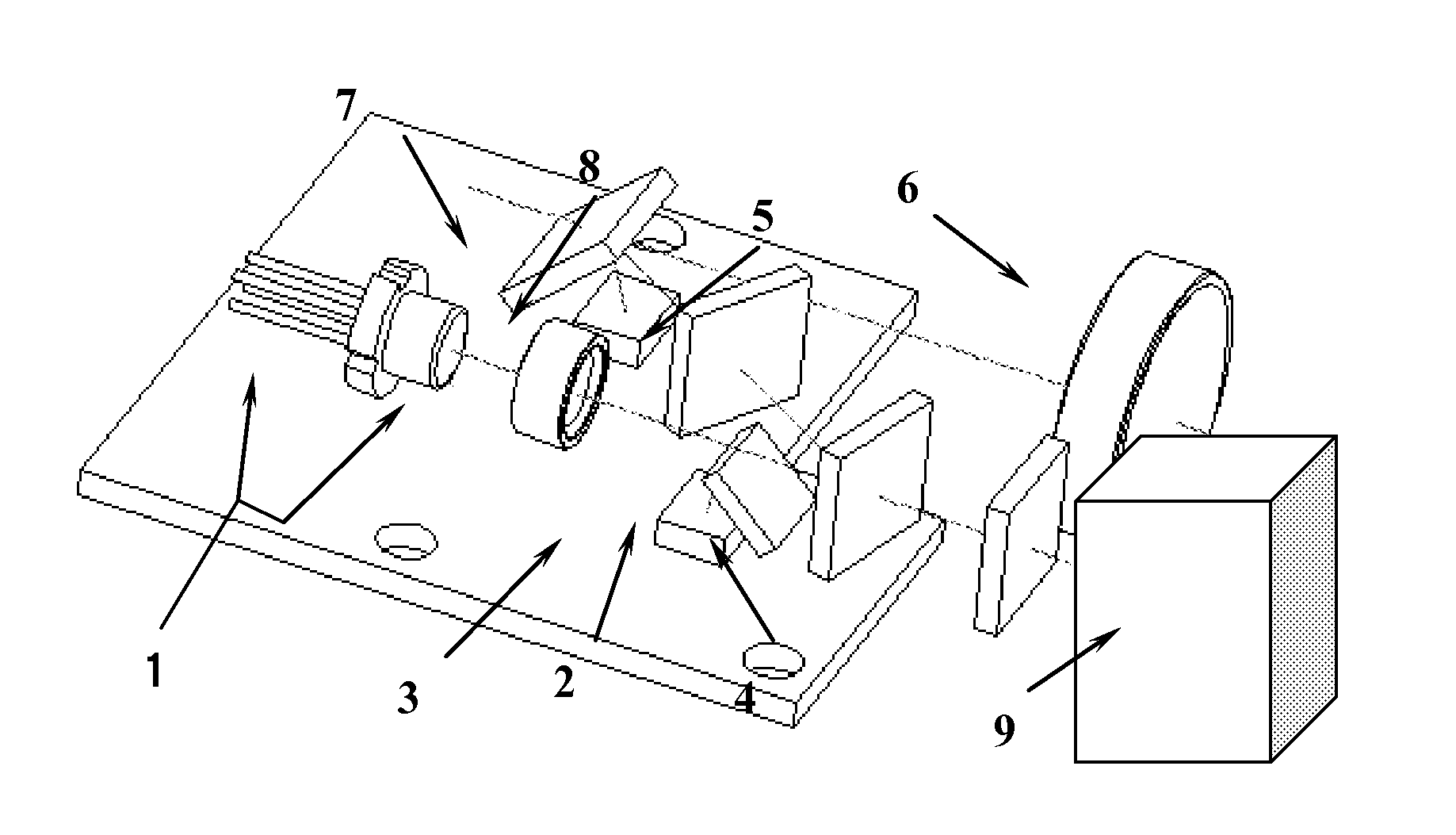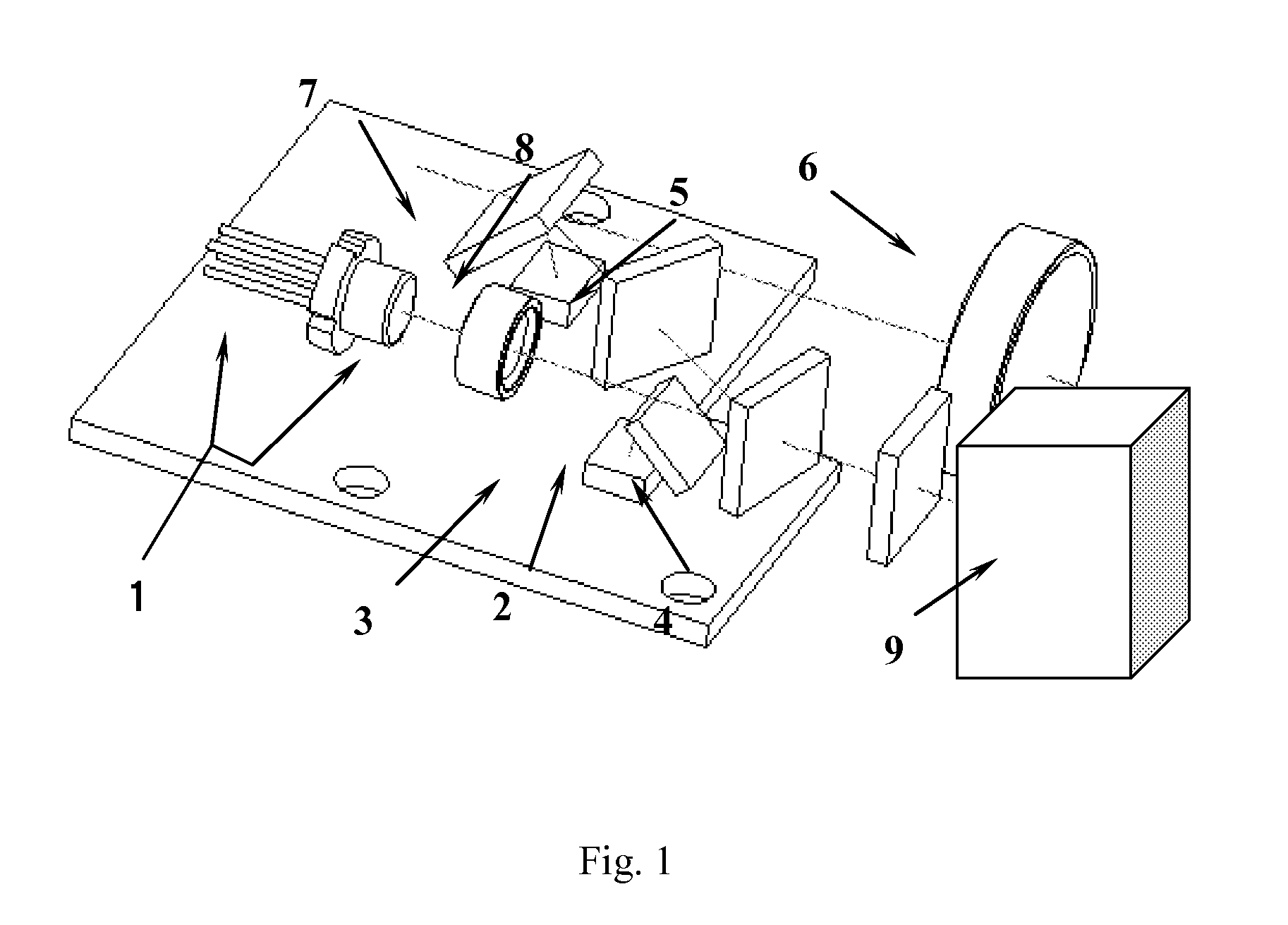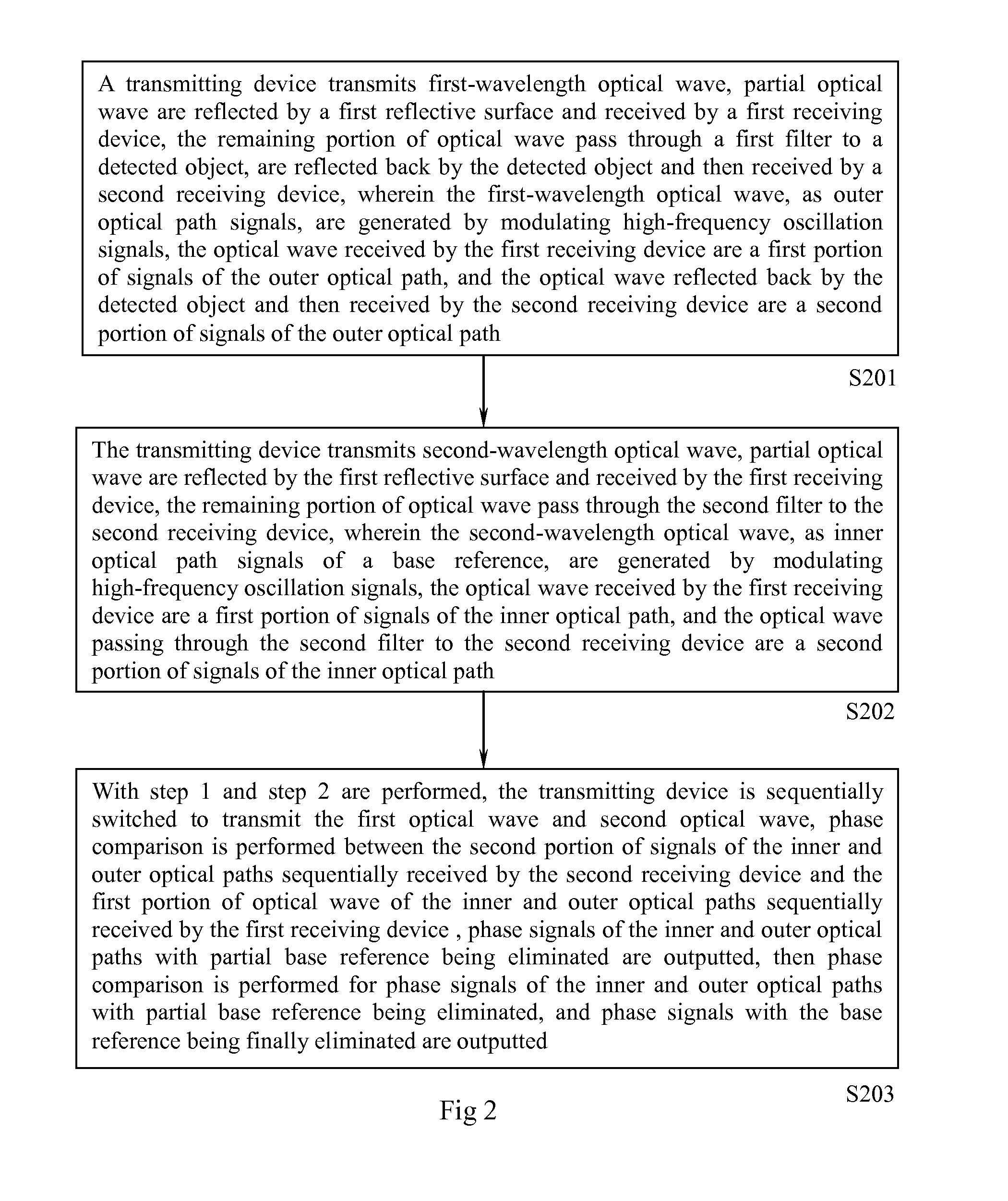Calibration method based on dual-transmitting dual-receiving phase measurement and distance-measuring device thereof
a phase measurement and calibration method technology, applied in the field of photoelectric distance measurement, can solve the problems of shortened life, complicated circuit, and need for more precise apparatuses, and achieve the effect of reducing the lifetime of the device and reducing the cost of the devi
- Summary
- Abstract
- Description
- Claims
- Application Information
AI Technical Summary
Benefits of technology
Problems solved by technology
Method used
Image
Examples
first embodiment
[0036]FIG. 4 is a systematic block diagram of a distance-measuring apparatus employing a dual-transmitting and dual-receiving phase measurement calibration method according to the present invention;
second embodiment
[0037]FIG. 5 is a systematic block diagram of a distance-measuring apparatus employing a dual-transmitting and dual-receiving phase measurement calibration method according to the present invention;
[0038]FIG. 6 is a structural diagram of a distance-measuring apparatus employing a dual-transmitting and dual-receiving phase measurement calibration method according to an embodiment of the present invention.
PUM
 Login to View More
Login to View More Abstract
Description
Claims
Application Information
 Login to View More
Login to View More - R&D
- Intellectual Property
- Life Sciences
- Materials
- Tech Scout
- Unparalleled Data Quality
- Higher Quality Content
- 60% Fewer Hallucinations
Browse by: Latest US Patents, China's latest patents, Technical Efficacy Thesaurus, Application Domain, Technology Topic, Popular Technical Reports.
© 2025 PatSnap. All rights reserved.Legal|Privacy policy|Modern Slavery Act Transparency Statement|Sitemap|About US| Contact US: help@patsnap.com



